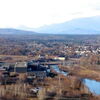
Processing Your Payment
Please do not leave this page until complete. This can take a few moments.
- News
-
Editions
-
- Lists
-
Viewpoints
-
Our Events
-
Event Info
- Business Leaders of the Year Reception 2025
- Women's Leadership Forum 2025
- On the Road with Mainebiz in Bethel
- Health Care Forum 2025
- On The Road with Mainebiz in Greenville
- On The Road with Mainebiz in Waterville
- Small Business Forum 2025
- Outstanding Women in Business Reception 2025
- On The Road with Mainebiz in Bath
- 60 Ideas in 60 Minutes Portland 2025
- 40 Under 40 Awards Reception 2025
- On The Road with Mainebiz in Lewiston / Auburn
- 60 Ideas in 60 Minutes Bangor 2025
Award Honorees
- 2025 Business Leaders of the Year
- 2024 Women to Watch Honorees
- 2024 Business Leaders of the Year
- 2023 NextUp: 40 Under 40 Honorees
- 2023 Women to Watch Honorees
- 2023 Business Leaders of the Year
- 2022 NextUp: 40 Under 40 Honorees
- 2022 Women to Watch Honorees
- 2022 Business Leaders of the Year
-
-
Calendar
-
Biz Marketplace
- News
- Editions
- Lists
- Viewpoints
-
Our Events
Event Info
- View all Events
- Business Leaders of the Year Reception 2025
- Women's Leadership Forum 2025
- On the Road with Mainebiz in Bethel
- Health Care Forum 2025
- On The Road with Mainebiz in Greenville
- + More
- On The Road with Mainebiz in Waterville
- Small Business Forum 2025
- Outstanding Women in Business Reception 2025
- On The Road with Mainebiz in Bath
- 60 Ideas in 60 Minutes Portland 2025
- 40 Under 40 Awards Reception 2025
- On The Road with Mainebiz in Lewiston / Auburn
- 60 Ideas in 60 Minutes Bangor 2025
- - Less
Award Honorees
- 2025 Business Leaders of the Year
- 2024 Women to Watch Honorees
- 2024 Business Leaders of the Year
- 2023 NextUp: 40 Under 40 Honorees
- 2023 Women to Watch Honorees
- 2023 Business Leaders of the Year
- + More
- 2022 NextUp: 40 Under 40 Honorees
- 2022 Women to Watch Honorees
- 2022 Business Leaders of the Year
- Nomination Forms
- Calendar
- Biz Marketplace
Camden revisits maker-space proposal for defunct tannery site
 COURTESY / TOWN OF CAMDEN
The former Apollo Tannery site, at 116 Washington St. in Camden, has been the subject of redevelopment discussions for 20 years.
COURTESY / TOWN OF CAMDEN
The former Apollo Tannery site, at 116 Washington St. in Camden, has been the subject of redevelopment discussions for 20 years.
The Camden Select Board recently revisited a proposal to develop an “affordable industrial village” at a defunct tannery site that’s been the subject of redevelopment conversations for 20 years.
The proposal calls for a common market, light industrial incubator spaces, an event venue and other amenities. It would also incorporate a weekly farmers market that already takes place at the site.
The town's goal is to renew conversations with Camden commercial real estate company Cranesport LLC and its owner, Michael Mullins, who originally made the proposal.
A purchase-and-sale agreement could then go to voters for approval at the town meeting in June, the board said.
Development reset
The discussion was a reset from previous conversations.
A year ago, the board was reviewing four redevelopment proposals for the 3.5-acre site, owned by the town and located at 116 Washington St.
The proposals stemmed from a request for proposals issued by the town in 2020.
Mullins’ original proposal was to acquire the site for $250,000 for redevelopment as an industrial village, keeping the farmers market in place.

In February, the board asked Mullins if he could modify his proposal to include affordable housing, which the board indicated was a top priority for the town.
In March, Mullins returned with an amended proposal that included up to 12 dwelling units on a portion of the site.
The units would be “non-subsidized middle-income rental units” affordable for median income households in Camden, which is estimated at $65,000 per household per year.
To make the inclusion of housing feasible from the financial and regulatory standpoints, Mullins identified changes that would be necessary:
• The town would no longer be offered $250,000 for the site.
• A tax increment financing district for the site, which includes a credit enhancement agreement, must be developed.
• A zoning ordinance amendment to allow for first-floor residential and to relax parking standards would be required.
Delayed town vote
The goal at that time was to send the proposal for a town meeting vote in June 2021. But the proposal didn’t make it to the town warrant due to complications related to the housing component.
The property’s manufacturing history goes back to 1855.
The town acquired the tannery in 2003 through a tax lien foreclosure, and in 2005 demolished the dilapidated, wood-frame building.
The property has been subject to brownfields cleanup since then, due to a century of heavy industrial operations and contaminants such as benzoapyrene and arsenic.
The U.S. Environmental Protection Agency has specified the clean-up must be completed by the end of September.
Zoning issues
At the Select Board meeting earlier this month, Town Manager Audra Calder said that, if the board wanted to continue to include housing as part of the redevelopment, a lot of work needs to be done to implement a land use zone change and a tax increment financing district for the site.
The site is currently zoned as River Business District. The zone is designated for river-oriented locations that have historically been used for economic activity, or for which there is opportunity for such activity, acceding to town documents.
Board members said that developing the necessary zoning changes for housing would delay the question well past June.
Instead, they agreed to present the original Cranesport proposal, without the housing component, to voters at this June’s town meeting, if a purchase-and-sale agreement could be worked out in time.
They also agreed that retaining the $250,000 purchase price would provide the town with funds to pursue affordable housing options elsewhere in town.
And they noted that a “guiding principles” document for the site, approved by voters in 2008, centered on business and green-space use of the site, not housing.
“The town had a legal vote back then and it was about business,” said Marc Ratner, a member of the Select Board.
Select Board member Alison McKellar said that, with the site’s redevelopment having been a topic for 20 years, her goal was to bring a proposal to voters. Town meeting discussion and a vote would clarify what direction the board should take, she noted.
“Putting it out to voters an letting the town speak — that’s our job,” Ratner agreed. “Then we get a clearer idea of what they want.”
The board directed Calder to pursue negotiations and draft an agreement with Mullins on the original Cranesport proposal without the housing component, with the goal of having it ready for the June meeting.










0 Comments